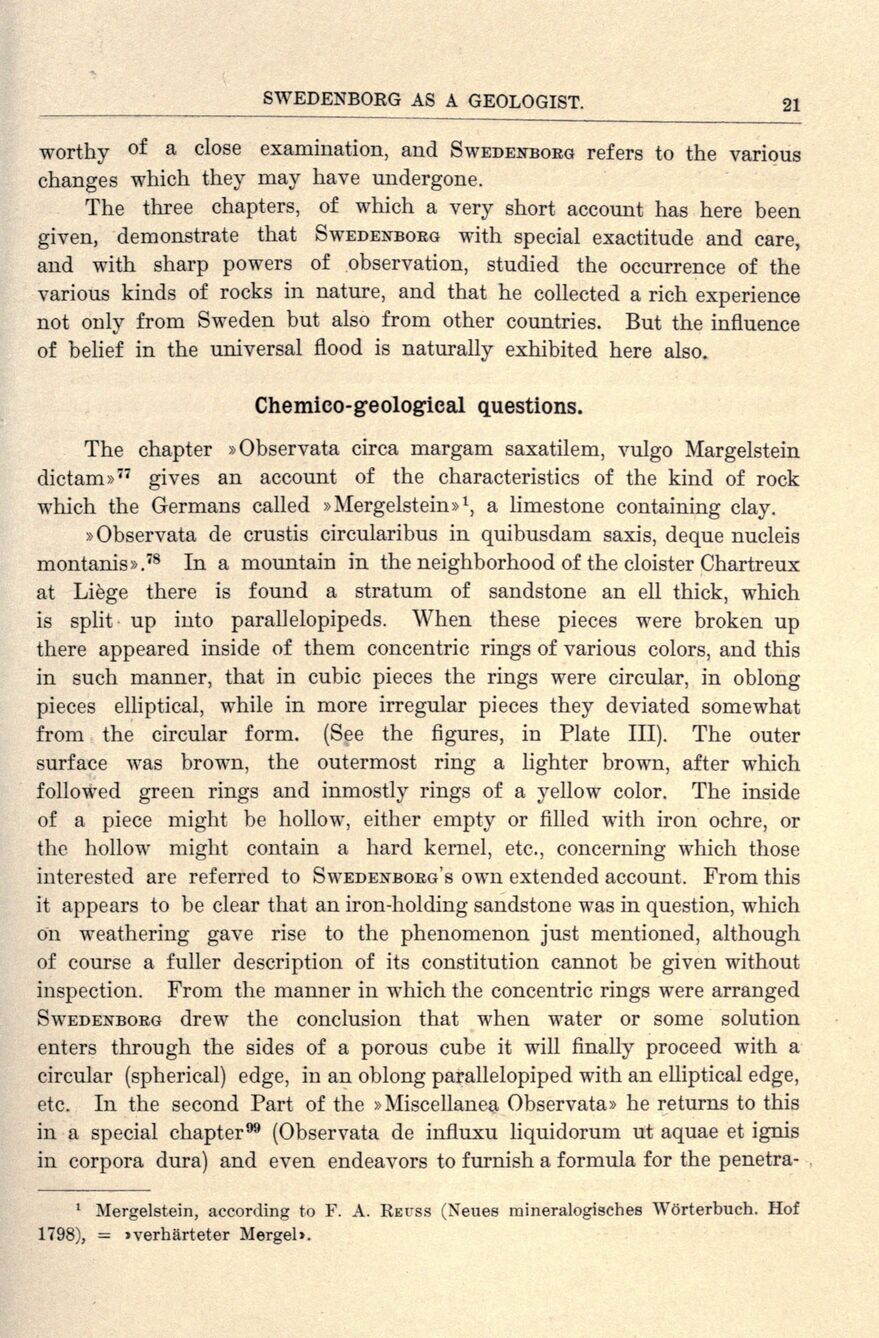
Full resolution (JPEG) - On this page / på denna sida - Sidor ...

<< prev. page << föreg. sida << >> nästa sida >> next page >>
Below is the raw OCR text
from the above scanned image.
Do you see an error? Proofread the page now!
Här nedan syns maskintolkade texten från faksimilbilden ovan.
Ser du något fel? Korrekturläs sidan nu!
This page has never been proofread. / Denna sida har aldrig korrekturlästs.
worthy °f a close examination, and Swedenborg refers to the various
changes which they mav have nndergone.
The three chapters, of which a very short acconnt has here been
given, demonstrate that Swedenborg with special exactitnde and care,
and with sharp powers of observation, stndied the occurrence of the
various kinds of rocks in nature, and that he collected a rich experience
not only from Sweden but also from other countries. But the influence
of belief in the universal flood is naturally exhibited here also.
Chemico-geological questions.
The chapter »Observata circa margam saxatilem, vulgo Margelstein
dictam»77 gives an account of the characteristics of the kind of rock
which the Germans called »Mergelstein»1, a limestone containing clay.
»Observata de crustis circularibus in quibusdam saxis, deque nucleis
montanis».78 In a mountain in the neighborhood of the cloister Chartreux
at Liége there is found a stratum of sandstone an ell thick, which
is split up into parallelopipeds. When these pieces were broken up
there appeared inside of them concentric rings of various colors, and this
in such manner, that in cubic pieces the rings were circular, in oblong
pieces elliptical, while in more irregular pieces they deviated somewhat
from the circular form. (See the figures, in Plate III). The outer
surface was brown, the outermost ring a lighter brown, after which
followed green rings and inmostly rings of a yellow color. The inside
of a piece might be hollow, either empty or filled with iron ochre, or
the hollow might contain a hard kernel, etc., concerning which those
interested are referred to Swedenborgs own extended account. From this
it appears to be clear that an iron-holding sandstone was in question, which
on weathering gave rise to the phenomenon just mentioned, although
of course a fuller description of its constitution cannot be given without
inspection. From the manner in which the concentric rings were arranged
Swedenborg drew the conclusion that when water or some solution
enters through the sides of a porous cube it will finally proceed with a
circular (spherical) edge, in an oblong parallelopiped with an elliptical edge,
etc. In the second Part of the »Miscellanea Observata» he returns to this
in a special chapter" (Observata de influxu liquidorum ut aquae et ignis
in corpora dura) and even endeavors to furnish a formula for the penetra-
1 Mergelstein, aecording to F. A. Retss (Nenes mineralogisches Wörterbuch. Hof
1798), = »verhärteter Mergel».
<< prev. page << föreg. sida << >> nästa sida >> next page >>